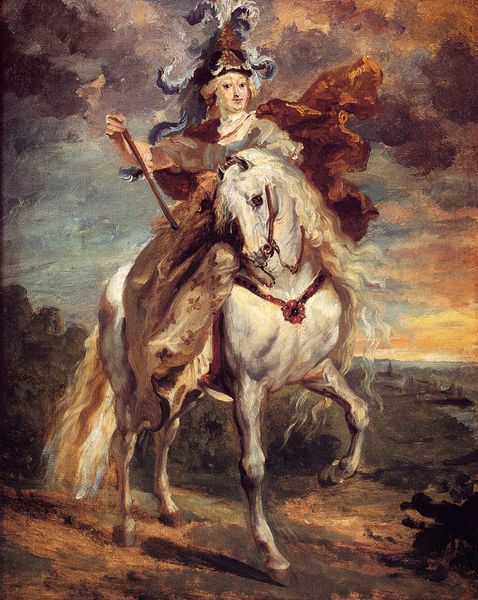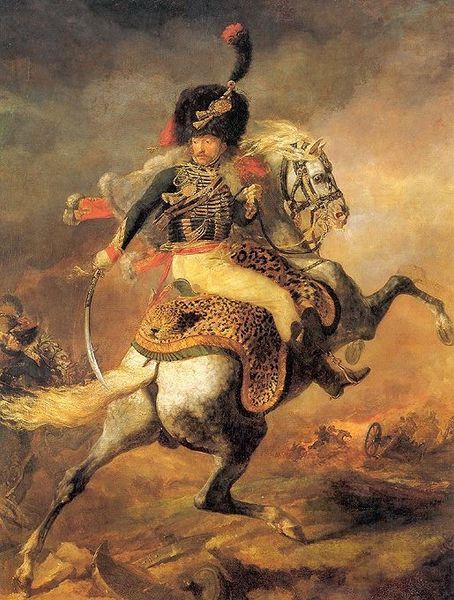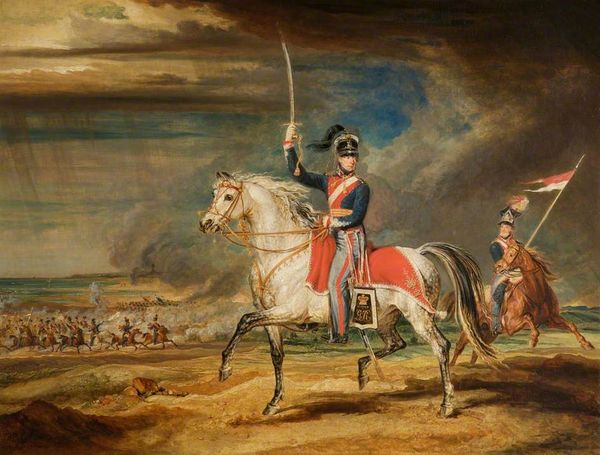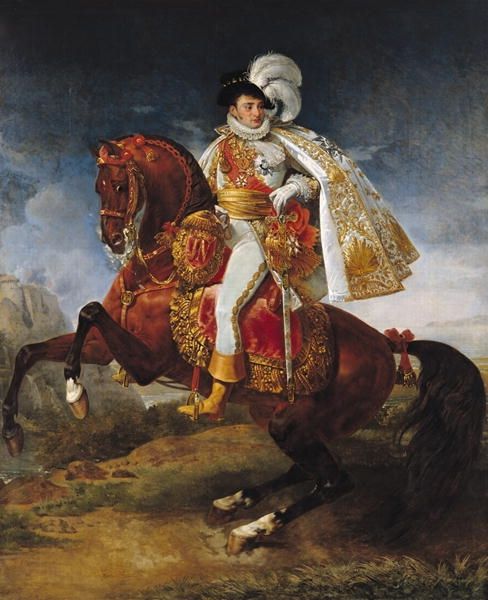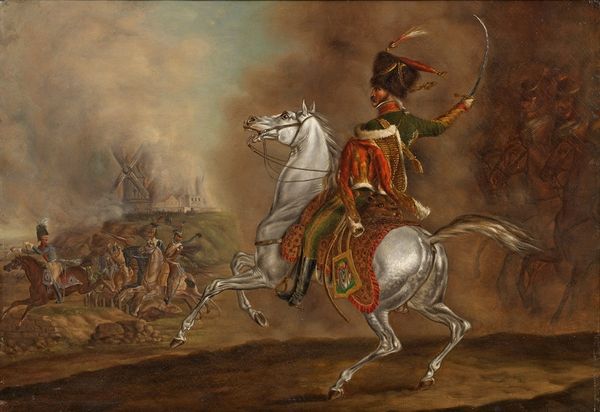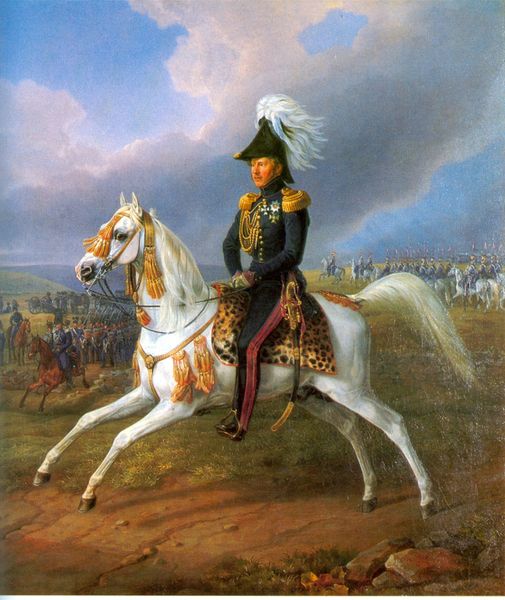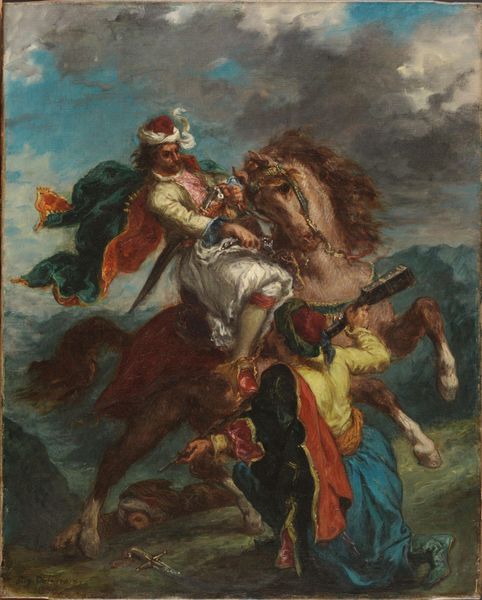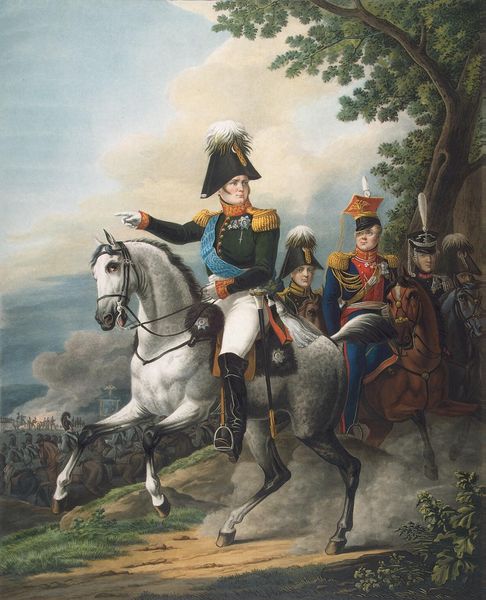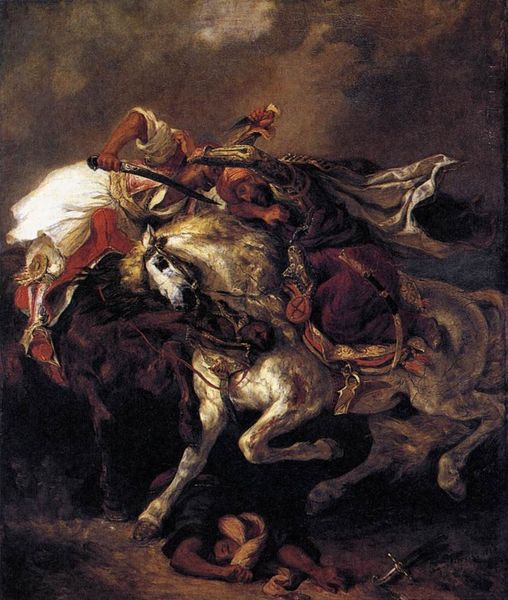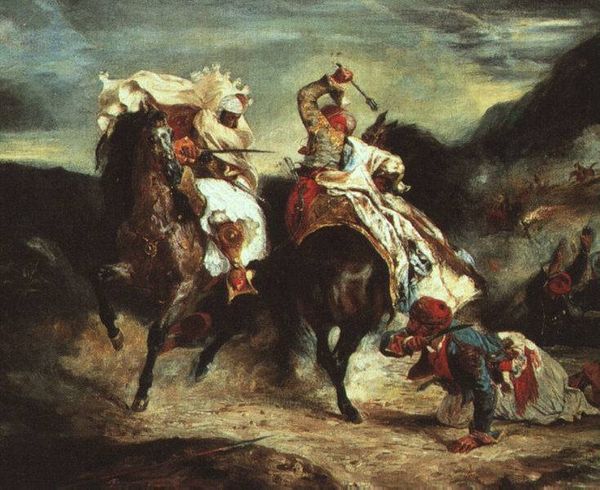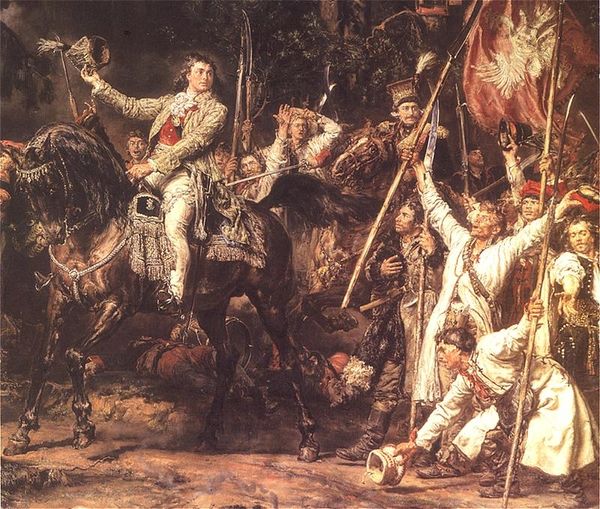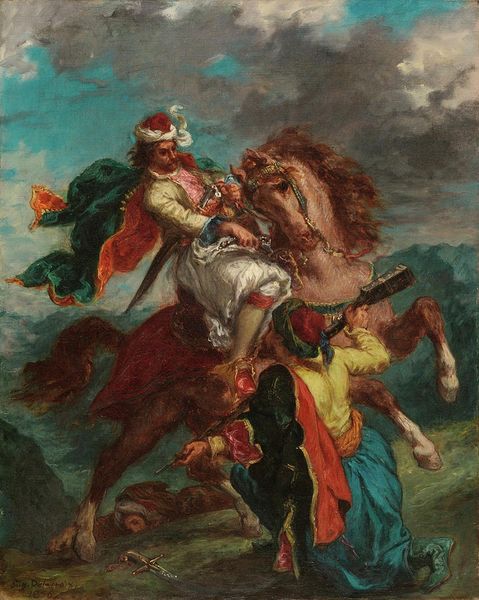
Copyright: Public domain
Curator: Here we have Marcello Bacciarelli's "Sobieski at the Battle of Vienna," an oil painting completed in 1796 and housed here at the National Museum in Krakow. Editor: Whoa, this is...intense. I mean, you’ve got this stark white horse rearing up, a noble figure pointing onward. It's almost like a heroic postcard from a really messy, complicated history. Lots of turbulent clouds here too. It gives it a theatrical flair, no? Curator: Absolutely. The painting portrays King John III Sobieski of Poland, leading his forces in the pivotal Battle of Vienna in 1683. A critical moment when a coalition of European forces halted the Ottoman Empire's advance into Europe. Bacciarelli was instrumental in shaping Polish national identity through his art, and Sobieski, the heroic savior, fit that perfectly. Editor: That explains the high drama! I am drawn to the feathers on his head! But does the glorification smooth over the actual chaos and complexities of war? Is this realism, or romantic propaganda? Curator: Bacciarelli worked primarily for the royal court, so while he's an exceptional portraitist, his art certainly served a purpose. These historical paintings promoted Polish prestige in a time when the country's sovereignty was challenged. It reflects the political context of the late 18th century, a period of partitions and struggles for national preservation. But of course the perspective is Polish, to show their strength, so probably this version is biased. Editor: So we are supposed to believe this is completely true… It all looks so stage-managed somehow. I'm wondering about the faces of the soldiers in the back – their quiet obedience. They feel a little detached from all this grandiosity. It adds a layer of interesting complexity. It gives this impression that this event really happened. It's intriguing. Curator: It really captures the grandeur and the political aspirations of the era. Seeing the details—the gleaming armor, the expressions of determination—helps to remind us of how art served as a vehicle for political messaging back then. Editor: And that messaging is not neutral; paintings like these shaped perspectives and identities, solidifying certain heroic narratives, sometimes obscuring uncomfortable truths. So really, it prompts us to question. Curator: Indeed. Appreciating the artist's skill in depicting this defining moment alongside understanding the work’s social and historical background opens many doors. Editor: This painting offers quite a heroic, yet complex way to reflect on history. The layers here have certainly provided me some thought-provoking avenues of consideration.
Comments
No comments
Be the first to comment and join the conversation on the ultimate creative platform.
